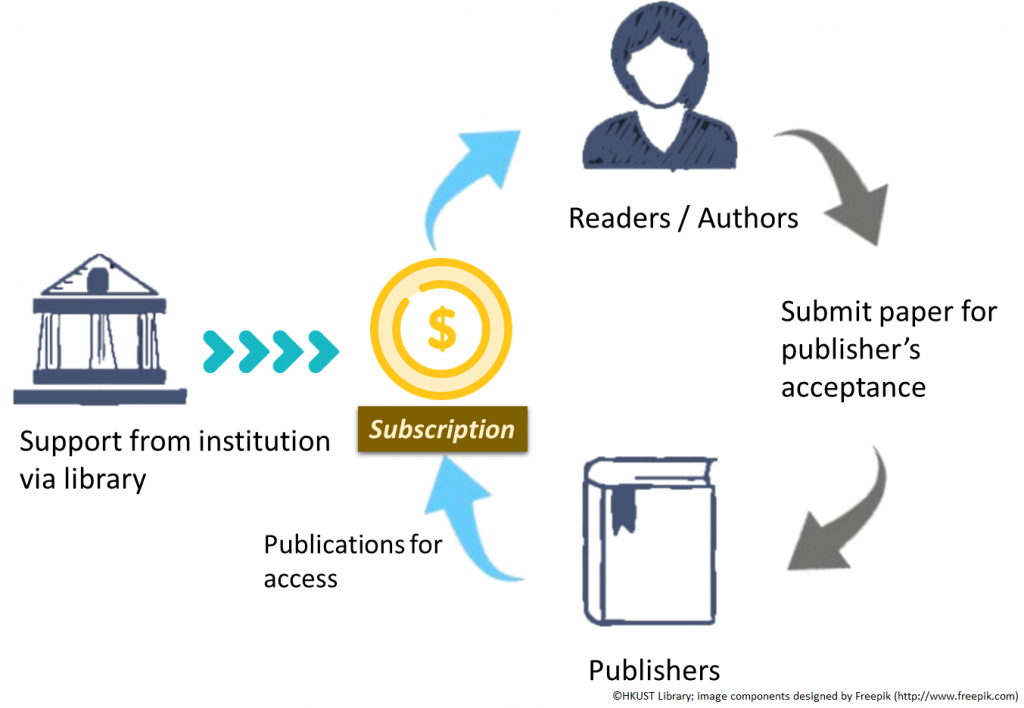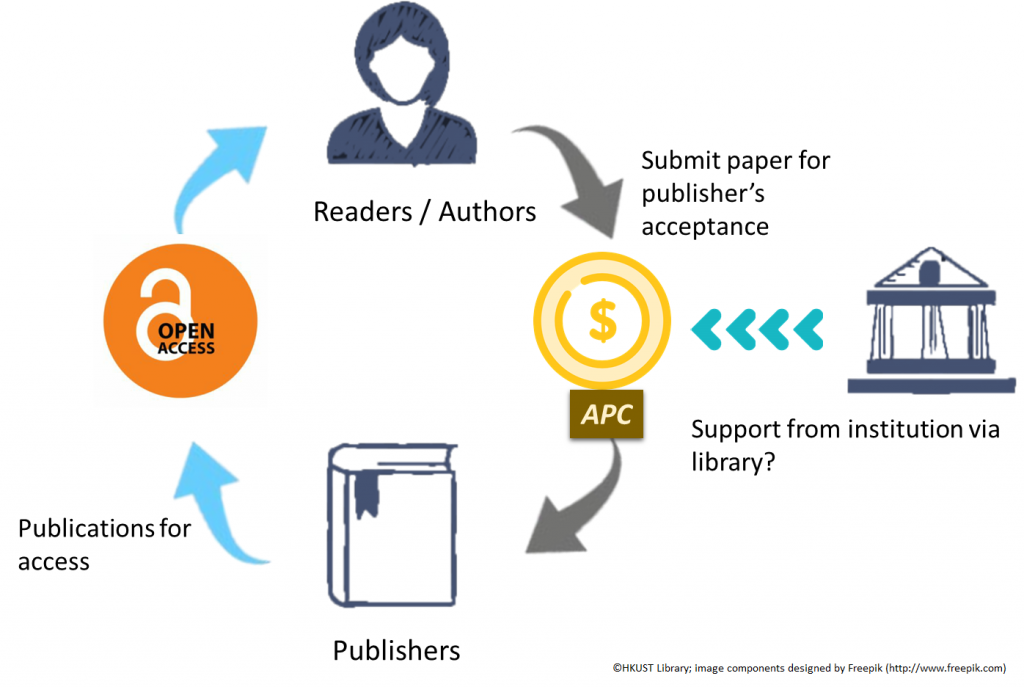Academic publishing is undergoing a transformational change. Many institutions collectively negotiated agreements with major publishers with non-traditional coverage. What does this trend mean to researchers like you?
Current Business Models of Academic Publishing
Over 80% of research publications* are locked up behind “paywalls”
These scholarly works are accessible only by those who have paid subscription fee. In a university environment, the library usually manages subscriptions for the whole institution.

The 20% of scholarly literature not bound by paywall is openly accessible to researchers and public anytime, anywhere
Open Access (OA) has been gaining momentum. Increasingly researchers see the value of making their work openly accessible; OA papers do have higher impact. Meanwhile, more funding agents and institutions require their researchers to release research outputs through OA channels. Plan S proposed by a collective of research funders in Europe is one such example.
There are different ways to make a work OA, not all of them incur cost. However, one popular channel adopted by majority of publishers is to charge authors a fee called article processing charge (APC) in order to cover the loss in subscription revenue.
Introducing Transformative Agreements
In the tradition subscription-based business model, libraries handle the subscription agreement with publishers on behalf of the institutions. In the OA model, can libraries help researchers manage or cover APC, thereby lifting the administration or even financial burden from affiliated researchers? Many libraries worldwide are exploring how to do just that; this kind of new arrangement with publishers are called Transformative Agreements.

Examples of Transformative Agreements
Germany-DEAL Consortium and Wiley
- DEAL represents all academic institutions in Germany in the negotiation; it is a national consortium
- Subscriptions fully converted to OA publishing fees
- ~ 9,500 publications per year
California Digital Library and Cambridge University Press
- CDL represents the University of California
- Subscriptions partly converted to OA publishing fees
- ~ 450 publications per year
- JISC’s membership includes many higher institutions in the UK
- Subscriptions fully converted to OA fees
- ~ 5,000 publications per year
Impact of Transformative Agreements
Transformative agreements aim to redirect the funding into academic publishing from supporting subscription to supporting publishing. It is a tool to make the majority of research output OA on publication. One can imagine, when the business model of academic publishing flips from “readers pay” to “authors pay”; almost all research literature would become OA, and you would no longer hit paywall to access articles you need.
While this ideal picture may be somewhat far in the future, libraries in UGC-funded universities have started to explore how transformative agreements can benefit researchers in Hong Kong. You will hear more about this from us in the coming months; and we will definitely be happy to hear from you to know how you view OA and APC.
*Notes
A study published in 2015 estimated 13% of journal literature was OA. The database Lens.org also had 13% scholarly work marked as OA across the years; among 2019 work, 17% was OA (as of September 17, 2019). Looking at HKUST papers in the last five years (2015-19), the OA proportion was around 20% with slight variation from database to database: 17% (Scopus), 21% (Web of Science) and 22% (Lens.org).
Views: 14501
Go Back to page Top
- Category:
- Academic Publishing
Tags: APC, open access, transformative agreements
published September 20, 2019
last modified March 11, 2022


